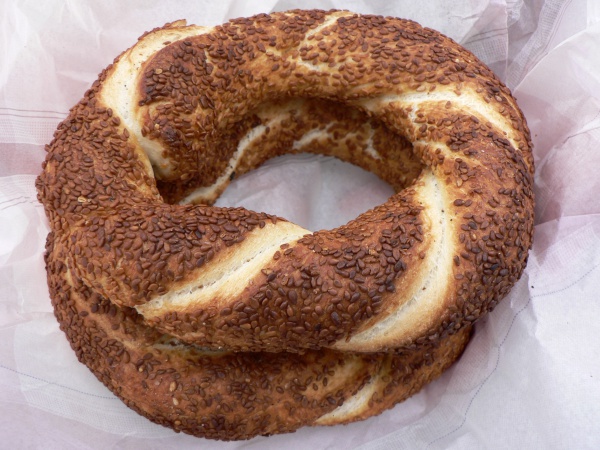Facts About Simit
Simit, also known as gevrek, bokegh, or koulouri, is a cherished circular bread originating from the cuisines of the former Ottoman Empire and the Middle East. Renowned for its crunchy crust, typically encrusted with sesame seeds, simit can also be sprinkled with other seeds depending on the region. Its size, crunchiness, and chewiness vary slightly from place to place. In the United States, it is often referred to as the "Turkish bagel."
The name "simit" is derived from the Arabic word "samīd" which means "white bread" or "fine flour." This bread is known by different names in various languages: in Greek, it is "koulouri"; in Turkish, "gevrek"; in South Slavic, "đevrek"; in Armenian, "բոկեղ"; and in Judaeo-Spanish, "roskas turkas."
Simit has a rich history in Istanbul, with records of its production dating back to 1525. By the 1630s, the 17th-century traveler Evliya Çelebi noted that the city had around 70 simit bakeries. Over time, simit and its variations spread throughout the Ottoman Empire, becoming a staple bread.
Typically enjoyed plain or with tea, simit is also delicious with fruit preserves, cheese, or ayran, especially for breakfast. In Armenia, it is a traditional Christmas bread. Street vendors in Turkey often sell simit, calling out its freshness or warmth to attract customers. This bread holds a special cultural significance for Turkey's lower and middle classes and is sometimes affectionately dubbed the "sesame kebab."
In other parts of the Middle East, simit pairs well with boiled eggs, duggah, yogurt, or buttermilk. It's also a popular choice during the breaking of fasts in mosques in Makkah and Madīnah. Similar breads include the Romanian covrigi, Polish obwarzanek, Russian, Ukrainian, and Belarusian bublik, and the Uyghur girde in China, which is baked on tandoor oven walls, just like simit.
